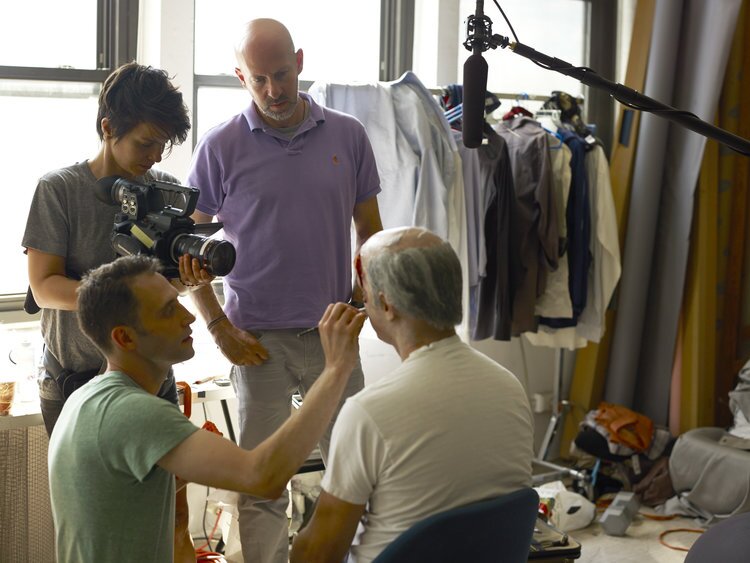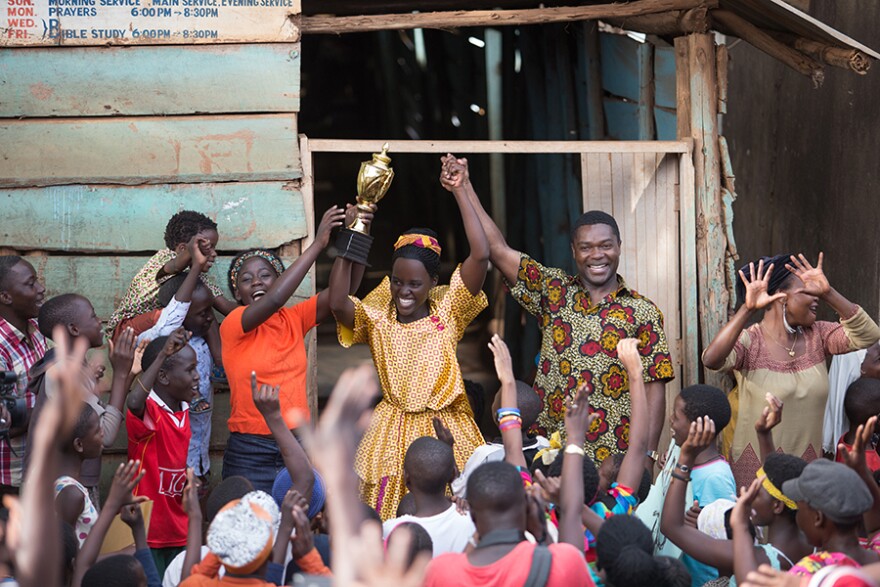Director Mira Nair's new movie, "Queen of Katwe," tells an inspirational story that's set in Uganda, showing a side of Africa not often seen in big studio movies; TV producers are high on reboots and remakes, with no sign of slowing; photographer Phil Toledano's bizarre attempt to deal with his death anxiety is documented in the film, "The Many Sad Fates of Mr. Toledano"
Recycling on TV is a 'trend that's not going anywhere'
There’s a common theme happening in television this fall — reboots.
"The Exorcist" on Fox and "MacGyver" on CBS are among the many reboots. There’s also “Lethal Weapon,” also on Fox, “Westworld” on HBO, and “Gilmore Girls,” coming to Netflix.
The Frame's John Horn spoke with Lesley Goldberg — TV news editor at The Hollywood Reporter — about television's obsession with nostalgia and how long it will last.
INTERVIEW HIGHLIGHTS:
On why there are so many reboots on television this season:
In this so-called "peak-TV" era — where you've got more than 400 scripted series in the works across broadcast, basic cable, premium — you need that brand recognition to help cut through. And you can see from misfires like "Rush Hour" that it doesn't always work well.
On how audiences respond to reboots:
Anytime we break news that there's a new reboot in the works, the backlash on Twitter is always instant. But at the same time, as audiences continue to age, you hit different sweet spots. Right now, pretty much anything in the '90s is of interest because it's all kind of cyclical.
On whether reboots are here to stay:
We did an executive survey of more than 20 different heads of networks and streaming platforms, and we polled them about reboots and if there's an end in sight. Not a single one of them said no. This is a trend that's not going anywhere.
The story behind 'The Many Sad Fates of Mr. Toledano'
The artist Phil Toledano has photographed obsessive video game players as well as people who’ve undergone extreme plastic surgery. The book, "Days With My Father," was an intimate chronicle as his father neared death. But for his latest endeavor, Toledano turned the camera on himself.
The peculiar thing about this project is that it's utterly useless. I mean you can't possibly anticipate what's going to happen but just the act of pretending to anticipate was useful for me.
For a project called “Maybe,” Toledano elaborately staged grim versions of his elderly self and imagined his own death — and then photographed them. The scenarios were based on readings by fortune tellers and psychics and an analysis of his DNA. The idea was triggered in 2009 when Toledano's father died, leaving him the only remaining member of his family: "I began to obsess about this thought of what else is life going to do to me?" (You can see some of the photos in the above slideshow.)
That same year, filmmaker Joshua Seftel's father died. When he learned of Toledano's project — the two were old college friends — he decided to document the process. What began as a three-month endeavor became a three-year project and the new film, “The Many Sad Fates of Mr. Toledano.”

This week, the documentary was released on the New York Times website (see link below), along with an essay by Seftel on why he wanted to watch his friend virtually die, over and over again. While this seems like a bizarre project, both Toledano and Seftel tell The Frame how their dual projects helped each of them individually deal with their father's death and embrace themselves as fathers.
To hear Phil Toledano and Joshua Seftel discuss "Maybe" and "The Many Sad Fates of Mr. Toledano" click the play button at the top of the page. To get more of The Frame, subscribe to the podcast on iTunes.
'Queen of Katwe' director Mira Nair brings a different African story to Hollywood
Mira Nair was living in her adopted home of Uganda when she got a visit from a Walt Disney executive who wanted her to adapt the true story of a local chess prodigy to the screen.
Phiona Mutesi lived in an impoverished neighborhood just around the corner from Nair's home when she was discovered and eventually went on to compete in the World Chess Olympiads. Though Nair was nervous about working with a big Hollywood studio, she was excited to tell a story about Africa unlike most that make it to American audiences.
The film is called "Queen of Katwe" and it stars Lupita Nyong'o, David Oyelowo and first-time actress Madina Nalwanga, who grew up in the same part of Uganda as the lead character she plays.
Nair spoke with The Frame's host, John Horn.
To hear the full conversation, click the play button at the top of the page.
Interview Highlights
On Hollywood's relationship with Africa:
If we see anything at all about Africa, it is always a colonial tale with a white person in the foreground and a nameless warrior in the background. And no country is mentioned, nothing specific is there. The continent is used usually as a backdrop to an outsider's tale. It was so inspiring to be able to consolidate living in Uganda, as I have, with the sassiness and the vibrancy and the dignity and the style of its people. And to be able to tell this unbelievably true story, which was real and also deeply inspiring — that genius truly is everywhere.
On working with Ugandan actors:
It is such a deeply moving storehouse of tradition and knowledge when you come from the continent and you're playing someone from that soil. Madina, the girl who plays Phiona, her story is very similar to Phiona's in that she grew up on the streets of Kibuli, which is next door to Katwe. She sold corn for a living. She knows every day what it is like to bathe with half an inch of water and still look like a fresh smelling rose at the end of it. Madina taught us so much while shooting ... how to cook, how to sit, how to bargain in the market.

On making a Ugandan story for an American audience
The privilege of making "Queen of Katwe" is that even though I'm taking the American audience into an entirely unfamiliar universe — a village, a street in the worst slum of Kampala — I'm hoping to have you in the tale of Phiona and her family and what makes her achieve her dream. I'm hoping that you will eventually see yourself. Because the aspiration in human beings to dream, to achieve, is not local to one place. It is a universal idea.





